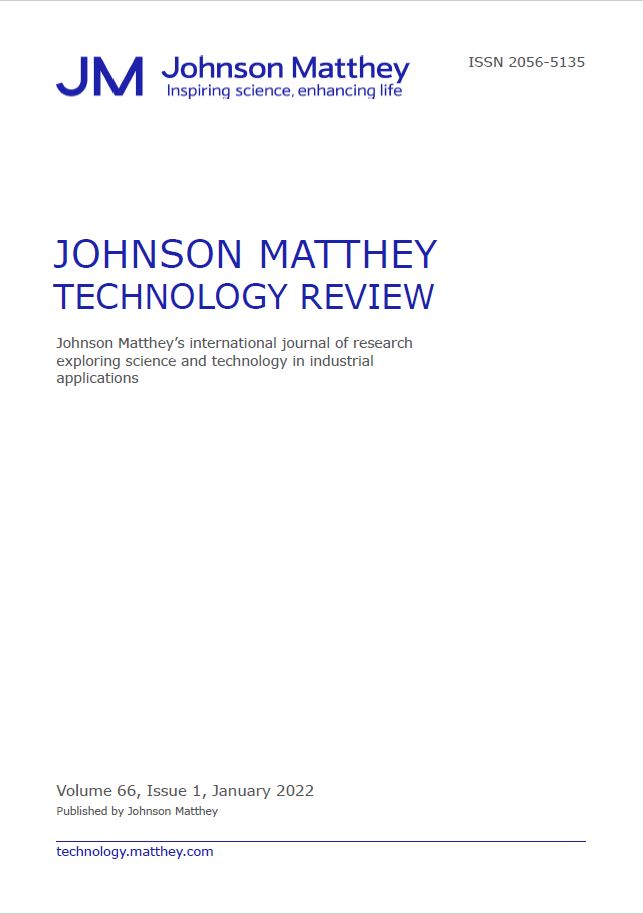-
oa Direct Ammonia Fuel Cells
A general overview, current technologies and future directions
- Source: Johnson Matthey Technology Review, Volume 66, Issue 4, Oct 2022, p. 479 - 489
-
- 07 Dec 2021
- 27 Jul 2022
- 28 Jul 2022
Abstract
Ammonia will be utilised as a key energy vector for storage and long-distance transport in the developing hydrogen economy. Direct ammonia fuel cells (DAFCs) have the potential to decrease the process complexity of current fuel cell technology and therefore increase overall efficiency and unit footprint where implemented. In this paper, current DAFC technologies are explored, such as solid oxide, alkaline and ammonia borane fuel cells. From this, it is shown that solid oxide fuel cells with oxygen conducting electrolyte (SOFC-O) have high experimental power outputs of 1100 mW cm–2 but have disadvantages of high nitrogen oxides (NOx) production, lower fuel utilisation and low efficiency. Alkaline and ammonia borane fuel cells are of lesser interest due to complex ammonia pretreatment, high NOx production and lower power outputs of 450 mW cm–2 and 110 mW cm–2, respectively. Solid oxide fuel cells with proton conducting electrolyte (SOFC-H) seem to have the most potential due to high theoretical power outputs, high efficiency, increased fuel utilisation and low NOx production. DAFC technology has yet to reach full commercialisation, but as the hydrogen economy develops the potential benefits of DAFCs in complexity and footprint reduction will drive further investment and development, particularly in the shipping sector.


